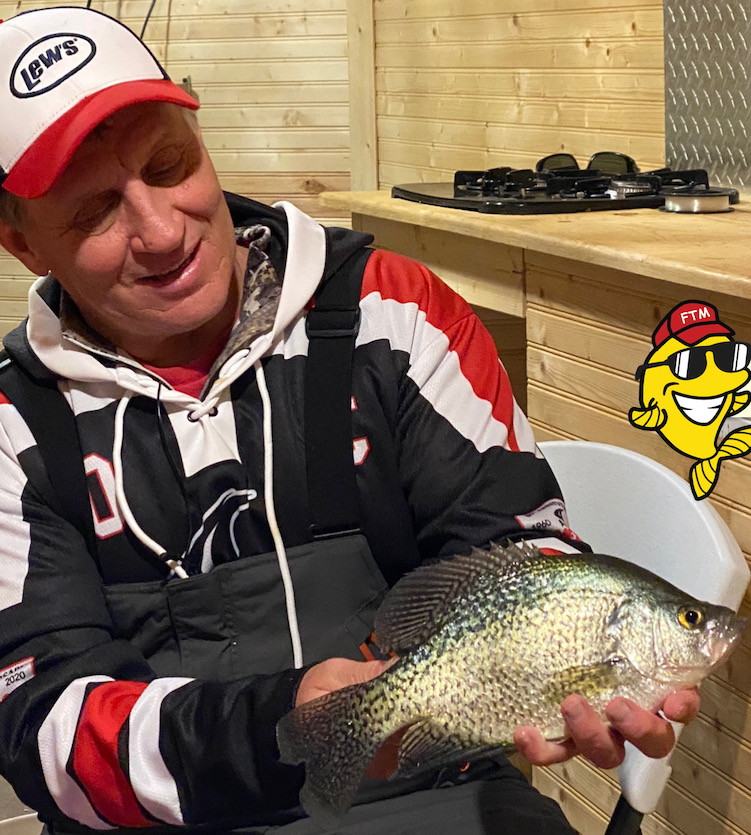Change It Up For January Success!

Change it up for January Success!
By Mike Frisch
Early ice, early winter fishing often calls for the use of jigging spoons to call in and catch aggressive fish. As winter progresses, however, fish get more pressured and their metabolism often slows too. For those reasons, the fish usually get less apt to bite as early winter becomes mid-season. There are, however, some things anglers can do to increase their odds for finding mid-winter fishing success.
The first recommendation for increasing your mid-winter successes is to re-evaluate your fishing spots. Those hot early ice bite spots often become “community spots” by January meaning many of the fish that called them home have left in anglers’ pails! And, the remaining fish have been bombarded by lures and are less likely to bite your bait.
Venturing out to new, less pressured areas and staying on the move to try to locate new spots and “fresh” fish is solid advice at this time. If you’re fishing for walleyes, for example, that might mean setting up in new spots several evenings in a row to try to find a productive new spot. Walleyes in lots of lakes are notorious for being lowlight feeders meaning an evening, or morning, bite often is by far and away the best opportunity to ice these fish.
Panfish may be more susceptible during daylight, but again some species on some lakes will have peak bites during early morning and again in late afternoon. So, again, hitting new spots to try to find a new bite is important, but so is fishing those peak times.
Fishing new spots at the right times is a good mid-season tactic, but so is making adjustments to your fishing presentations. Jigging spoons and lures will still attract and catch fish, but often I work them less aggressively now. And, when a fish does appear, I always have a “bobber rod” set up next to my jigging rod. The bobber rod often features a lively minnow as bait. And, a walleye or crappie attracted to my jigging spoon but not willing to hit, will often be attracted to the lively, squirming minnow just next to my jigging bait.
Lightly hooking minnows behind the dorsal fin, using fresh and lively minnows, and then changing out a “tired” minnow is a good way to up the chances that this bobber set-up gets bit. As simple as it seems, a lively minnow on a plain hook beneath a bobber will often be the best fish producer during a tough bite.
Another trick to fooling mid-winter fish with this presentation is to use a barely-floating bobber that easily slides under the water when a fish bites. I use an Ice Buster bobber because it can be trimmed down so it easily slides under water without alerting a finicky fish that might be spooked by a more buoyant float.
A final bit of advice when pursuing fish during mid-winter fish is the importance of using quality sonar. Carefully watching your sonar will tell you fairly quickly if any fish are in present in a new spot. Sonar can also be very beneficial in helping read the mood of any fish present, which can help when experimenting with various jigging approaches in an attempt to find one that attracts and triggers some fish. The new FLX-30 sonar I am using has all the fishing features an angler could want, plus it features a lightweight, long lasting lithium battery.
Anglers wanting to find more fish during mid-winter would be wise to consider exploring to find new fishing spots and then using some of the presentation tips just outlined. Those tips just might, in fact, help lead to a good ice bite on your next fishing adventure. And, as always, remember to include a youngster in those ice fishing trips!
Mike Frisch hosts the popular Fishing the Midwest TV series. Visit www.fishingthemidwest to see more fishing tips and view recent TV episodes as well!
Photo – The author with a January crappie. As winter progresses, anglers may need to adjust their methods to maintain ice fishing successes!

